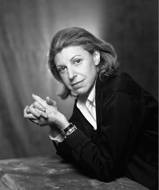| Helen Frankenthaler
Helen Frankenthaler (December 12, 1928 - December 27, 2011) was an American abstract expressionist painter. She was a major contributor to the history of postwar American painting. Having exhibited her work in six decades, she has spanned several generations of abstract painters while continuing to produce vital and ever-changing new work. She began exhibiting her large-scale abstract expressionist paintings in contemporary museums and galleries in the early 1950s. She was included in the 1964 Post-Painterly Abstraction exhibition curated by Clement Greenberg that introduced a newer generation of abstract painting that came to be known as Color Field. Born in New York City, she was influenced by Hans Hofmann, Jackson Pollock's paintings and by Clement Greenberg. Her work has been the subject of several retrospective exhibitions; including a 1989 retrospective at the Museum of Modern Art in New York City. Her work has been exhibited worldwide since the 1950s. In 2001, she was awarded the National Medal of Arts.
Frankenthaler has a home and studio in Darien, Connecticut.
Frankenthaler comes from a Jewish family. She is the youngest daughter of Alfred Frankenthaler, who was a justice on the New York State Supreme Court. Her nephew is the artist/photographer Clifford Ross.
She studied at the Dalton School under Rufino Tamayo and also at Bennington College in Vermont. She was later married to fellow artist Robert Motherwell (1915-1991), from 1958 until they divorced in 1971.
Frankenthaler has been on the faculty of Hunter College.
Initially associated with abstract expressionism her career was launched in 1952 with the exhibition of Mountains and Sea. This painting is large - measuring seven feet by ten feet - and has the effect of a watercolor, though it is painted in oils. In it, she introduced the technique of painting directly onto an unprepared canvas so that the material absorbs the colors. She heavily diluted the oil paint with turpentine so that the color would soak into the canvas. This technique, known as "soak stain" was used by Jackson Pollock (1912-1956), and others; and was adopted by other artists notably Morris Louis (1912-1962), and Kenneth Noland (1924-2010), and launched the second generation of the Color Field school of painting. This method would sometimes leave the canvas with a halo effect around each area to which the paint was applied but has a disadvantage in that the oil in the paints will eventually cause the canvas to discolor and rot away.
One of her most important influences was Clement Greenberg (1909-1994), an influential art and literary critic with whom she had a personal friendship and who included her in the Post-Painterly Abstraction exhibition that he curated in 1964. Through Greenberg she was introduced to the New York art scene. Under his guidance she spent the summer of 1950 studying with Hans Hofmann (1880-1966), catalyst of the Abstract Expressionist movement.
The first Jackson Pollock show Frankenthaler saw was at the Betty Parson's Gallery in 1950. She had this to say about seeing Pollock's paintings Autumn Rhythm, Number 30, 1950 (1950), Number One,1950 (Lavender Mist) (1950): "It was all there. I wanted to live in this land. I had to live there, and master the language."
In 1960 the term Color Field painting was used to describe the work of Frankenthaler. This style was characterized by large areas of a more or less flat single color. The Color Field artists set themselves apart from the Abstract Expressionists because they eliminated the emotional, mythic or the religious content and the highly personal and gestural and painterly application.
Some of her thoughts on painting:
"A really good picture looks as if it's happened at once. It's an immediate image. For my own work, when a picture looks labored and overworked, and you can read in it-well, she did this and then she did that, and then she did that-there is something in it that has not got to do with beautiful art to me. And I usually throw these out, though I think very often it takes ten of those over-labored efforts to produce one really beautiful wrist motion that is synchronized with your head and heart, and you have it, and therefore it looks as if it were born in a minute." (In Barbara Rose, Frankenthaler (New York: Harry N. Abrams, Inc. 1975, p. 85)
Courtesy Wikipedia |


